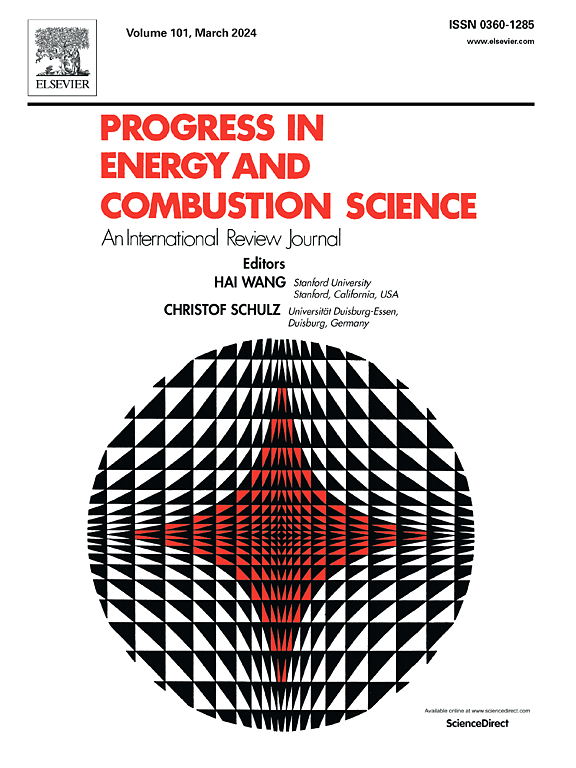Techniques for measuring flare combustion efficiency and destruction removal efficiency: A review
IF 37
1区 工程技术
Q1 ENERGY & FUELS
引用次数: 0
Abstract
Growing awareness of the environmental and health impacts of unburned and partially pyrolyzed hydrocarbons emitted by flaring establishes a need for instrumentation that can quantify the performance of flares in terms of overall combustion efficiency (CE) as well as the destruction removal efficiency (DRE) of a particular species. Climate modelers and policymakers need CE estimates to calculate the overall contribution of flaring to global methane inventories, so they may understand how flare emissions impact climate change and develop science-informed regulations; regulators need tools for enforcing current and emerging rules governing flare DRE; flare operators need instrumentation to identify problematic operating conditions in real time; and combustion equipment manufacturers need to quantify improvements in CE/DRE realized through new flare tip designs.
This paper reviews the current state-of-the-art in instrumentation and techniques used for quantifying CE and DRE, with a focus on flaring in the oil and gas sector. The paper begins with an overview of flaring, followed by a discussion of the aspects of flaring that make this measurement so difficult to carry out. Techniques for measuring flare CE and DRE are then examined. The paper concludes with an outlook of future challenges and opportunities.
耀斑燃烧效率和消毁效率的测量技术综述
人们日益认识到燃除所排放的未燃烧和部分热解的碳氢化合物对环境和健康的影响,因此需要一种仪器,能够从总体燃烧效率(CE)和特定物种的破坏去除效率(DRE)方面量化燃除的性能。气候建模者和决策者需要CE估算来计算燃烧对全球甲烷库存的总体贡献,这样他们就可以了解燃烧排放如何影响气候变化,并制定科学的法规;监管机构需要工具来执行现行和新出台的有关火炬DRE的规则;火炬操作员需要仪器来实时识别有问题的操作条件;燃烧设备制造商需要量化通过新的火炬尖端设计实现的CE/DRE的改进。本文回顾了目前用于量化CE和DRE的仪器和技术的最新进展,重点是石油和天然气行业的燃除。本文首先概述了燃烧,然后讨论了燃烧的各个方面,使这种测量难以进行。然后研究了测量耀斑CE和DRE的技术。文章最后展望了未来的挑战和机遇。
本文章由计算机程序翻译,如有差异,请以英文原文为准。
求助全文
约1分钟内获得全文
求助全文
来源期刊

Progress in Energy and Combustion Science
工程技术-工程:化工
CiteScore
59.30
自引率
0.70%
发文量
44
审稿时长
3 months
期刊介绍:
Progress in Energy and Combustion Science (PECS) publishes review articles covering all aspects of energy and combustion science. These articles offer a comprehensive, in-depth overview, evaluation, and discussion of specific topics. Given the importance of climate change and energy conservation, efficient combustion of fossil fuels and the development of sustainable energy systems are emphasized. Environmental protection requires limiting pollutants, including greenhouse gases, emitted from combustion and other energy-intensive systems. Additionally, combustion plays a vital role in process technology and materials science.
PECS features articles authored by internationally recognized experts in combustion, flames, fuel science and technology, and sustainable energy solutions. Each volume includes specially commissioned review articles providing orderly and concise surveys and scientific discussions on various aspects of combustion and energy. While not overly lengthy, these articles allow authors to thoroughly and comprehensively explore their subjects. They serve as valuable resources for researchers seeking knowledge beyond their own fields and for students and engineers in government and industrial research seeking comprehensive reviews and practical solutions.
 求助内容:
求助内容: 应助结果提醒方式:
应助结果提醒方式:


